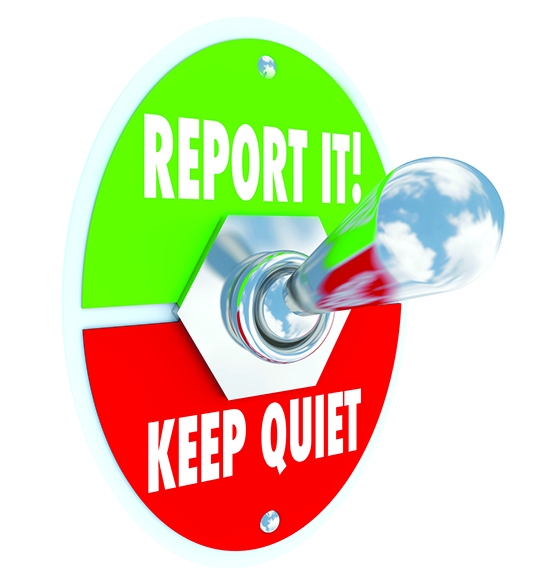
Features
Articles
When electrical product does not meet Canadian safety standards
January 20, 2017 | By Bill Bryans
 Photo courtesy: Shutterstock.
Photo courtesy: Shutterstock.January 20, 2017 – Occasionally, an organization or individual becomes aware of a consumer or commercial product that appears unsafe, or does not appear to be a legitimate product properly certified for its intended purpose.
For example, you may come across a product with labelling that contains spelling mistakes, bearing Marks or logos that don’t appear correct, or displaying some other feature that appears abnormal.
All electrical products in Canada must be tested and certified by a certification body (CB)—accredited by Standards Council of Canada (SCC)—against a recognized Canadian product standard. The product can then be safely installed according to the rules of the relevant province’s or territory’s adoption of the CE Code.
In Ontario, for example, Electrical Safety Authority has published a list of Recognized Certification Marks for electrical products or pieces of electrical equipment to be used, sold, displayed or advertised for sale in the province. Visit esasafe.com and click on “Electrical Products” then “Recognized Certification Marks”.
Reporting unsafe product
When you suspect a potential safety concern with an electrical product, you should report it. But who do you contact?
Well, there are several organizations, in fact:
• The certification body (i.e. the one whose Mark appears on the product)
• Your provincial/territorial authority
• Standards Council of Canada
• Health Canada (for consumer products)
Here are the kinds of things that should be reported:
• Fire, shock or other personal injury or property damage allegedly caused by a certified product.
• Misuse, misrepresentation or unauthorized use of a certification Mark.
• Non-compliance with the Canadian safety standard for that product.
• Inappropriate or unauthorized reference(s) to product certification on packaging, websites, brochures or ads.
For any of these examples, the certification body whose Mark appears on, or is associated with, a suspected product should be notified. A directory of all Canadian accredited Product, Process & Service CBs and inspection bodies can be found on SCC’s website. Visit scc.ca and click “Accreditation”, then choose either “Product, Process & Service Certification” or “Inspection”. Scroll down a bit until you come across “Find an Accredited Certification Body” or “Find an Accredited Inspection Body”.
The three most commonly used CBs in the electrical market are CSA, UL and Intertek. Here’s how to contact them regarding a suspicious product:
CSA Group
When you visit csagroup.com, click on “About” then “Global Brand Protection”. There, on the left, you’ll find options like “View CSA Marks”, “Counterfeit Marks” and “Submit an Incident Report”.
UL (Underwriters Laboratories)
Visit UL.com and scroll to “Resources” until you find “Report a Concern”.
Intertek
Visit intertek.com and, under “Knowledge & Education”, click on “Regulatory Resources”. Along the right-hand side you will find the “Inspector Center”. When you click there, you will find “Non-Conforming Product Complaint/Field Investigation Request” along the right side.
When contacted, the relevant CB must open a Product Incident Report to investigate concerns about any certified product brought to their attention by consumers, manufacturers, distributors, retailers and Authorities Having Jurisdiction (AHJs). When a Product Incident Report is opened, the CB verifies whether the concern is relevant, documents its findings and works to determine the root cause. Then it takes appropriate action to resolve bona fide concerns.
Those reporting a product incident will receive acknowledgment their submission has been received by the CB. Investigations can take a few days to several months to complete, depending on their complexity.
Unfortunately, when the CB’s investigation is complete, it may not be able to share its conclusions with you, particularly when they have a contracted confidentiality agreement with the manufacturer or importer under investigation. Should the product in question be found unsafe, the CB will work with the manufacturer/importer to establish a product recall.
Additional action items
There are a few other things you can do to take action against suspected products.
Send a copy of your complaint letter to the regulatory authority where the product was found. All the relevant Canadian authorities can be found on the Regulatory Authority Advisory Bodies (RAAB) on SCC’s website. Each CB is obligated under their accreditation to report field incidents annually to their RAAB, so each year the totals should tally.
Visit scc.ca and click “Accreditation”, then choose “Product, Process & Service Certification”. On the left you will find “Regulatory Authority Advisory Bodies”.
For our sector, the contact at the Canadian Advisory Council on Electrical Safety (CACES) is:
Ulrich Janisch
Executive Secretary, CACES
778-396-2442
ulrich.janisch@safetyauthority.ca
Another copy of your complaint letter should be sent to SCC’s Chantal Guay, vice-president, Accreditation Services, at cguay@scc.ca. SCC also verifies the CB’s reported incident follow-up record during accreditation audits.
Finally, when the suspect product is also a consumer product, contact Health Canada’s Consumer Product Safety Incident Reporting. Visit hc-sc.gc.ca and, along the left, you will see “Consumer Product Safety”. Upon clicking it, you will go to a new page where, along the right, you will see “Report an unsafe consumer product”.
The worst thing you can do is nothing at all. We all have a role to play in keeping ourselves—and those around us—safe from suspect product, especially when it’s electrical.
Bill Bryans is vice-president, Technical Services-Electrical, with Electro-Federation Canada (electrofed.com), a national industry association representing over 250 member companies that manufacture, distribute, market and sell a range of electrical products, including distribution equipment, industrial controls, lighting, motors and generators, transformers, wire and cable, wiring supplies and electric heating. Bill can be reached at bbryans@electrofed.com.
Print this page